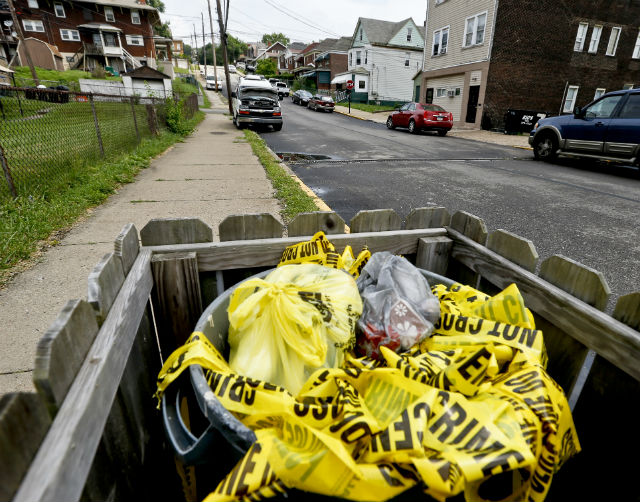
Credit: (AP Photo/Keith Srakocic)
Note: This piece was updated on March 22nd, 2019.
Talk to anyone who lived in New York City in the 1970s, and they will probably highlight the city’s widespread crime. Times Square wasn’t yet Disney-fied and Brooklyn hadn’t been taken over by hipsters. Most people agreed that New York was a dangerous place. But then something happened: murders, and violent crime in general, began to drop. And that trend wasn’t unique to New York: It happened in many places across America. So who do we have to thank for the crime decline? To find out, we talk with NYU sociology professor Patrick Sharkey about his book “Uneasy Peace: The Great Crime Decline, the Renewal of City Life, and the Next War on Violence.”
Three Takeaways:
- A new crime agenda by Democrats, an increase in cities’ police forces, and private security guards all contributed to America’s crime decline. But Sharkey says there’s one factor that’s often overlooked: community organizations. In the 1990s, places like the Boys & Girls Club of America and substance abuse organizations started getting more funding and began drastically mobilizing in ways they hadn’t before. And the work they did helped reform often-overlooked areas of the community.
- Sharkey argues that while lower murder rates and decreased crime are good, many of the other ways we got here aren’t necessarily positive. More aggressive police practices and high incarceration rates created a whole new set of problems.
- If you lived in a poor area between the 1970s and the 1990s, it generally meant you lived in a dangerous area, too. Sharkey says that one of the starkest changes of the last few decades is that, while there are still impoverished areas in cities, they aren’t as highly associated with violent crime as they used to be.
More Reading:
- The overall crime rate is much lower than it was in the in the early 1990s. But it has recently started to rise again. FiveThirtyEight explains the data.
- Sharkey has been tracking murders and murder rates of American cities for the last few decades at his website AmericanViolence.org.
- Surprisingly enough, gentrification has a huge hand in lowering crime rates. The Atlantic explains that ripple effect.

